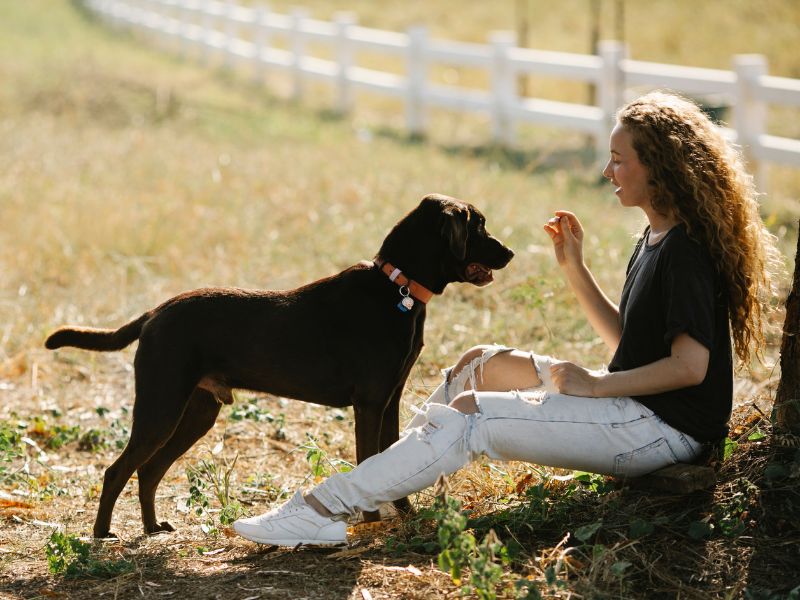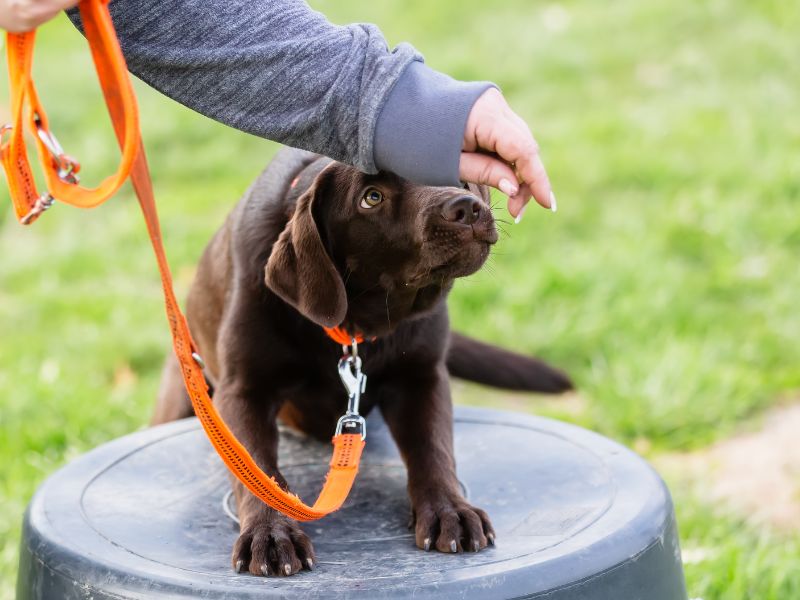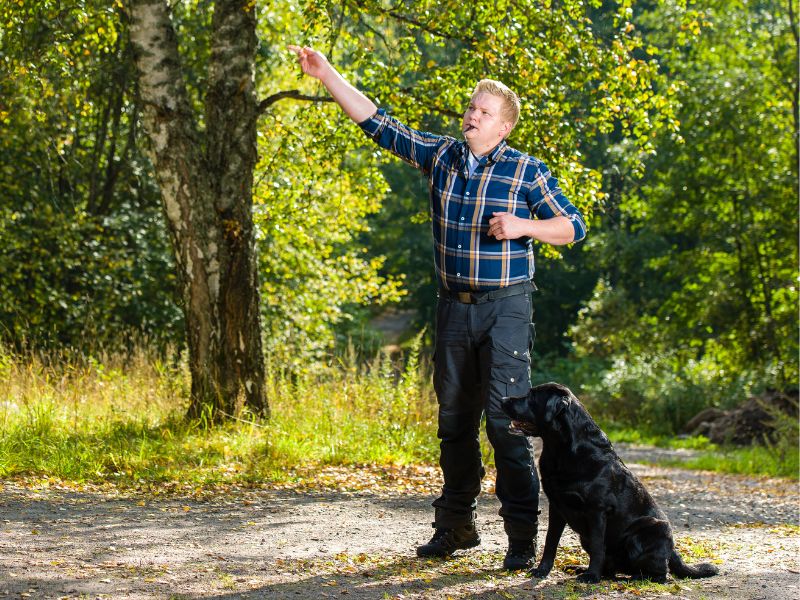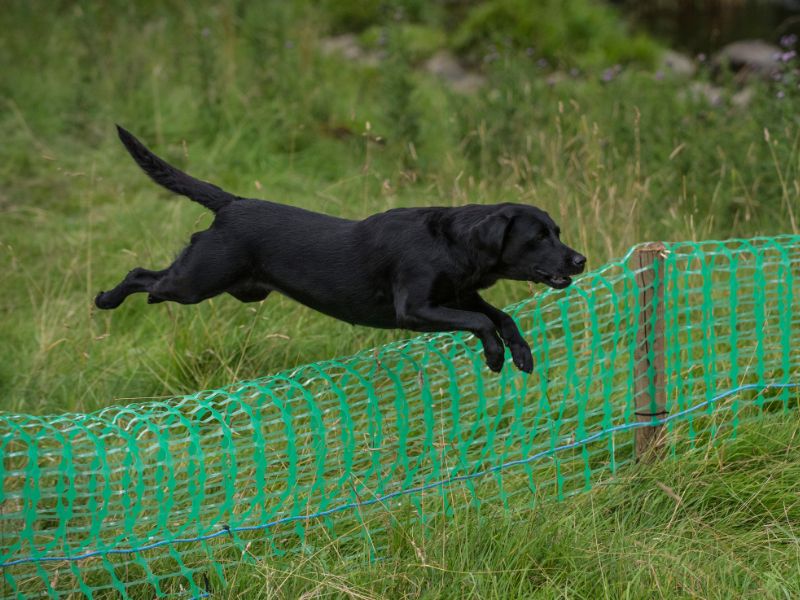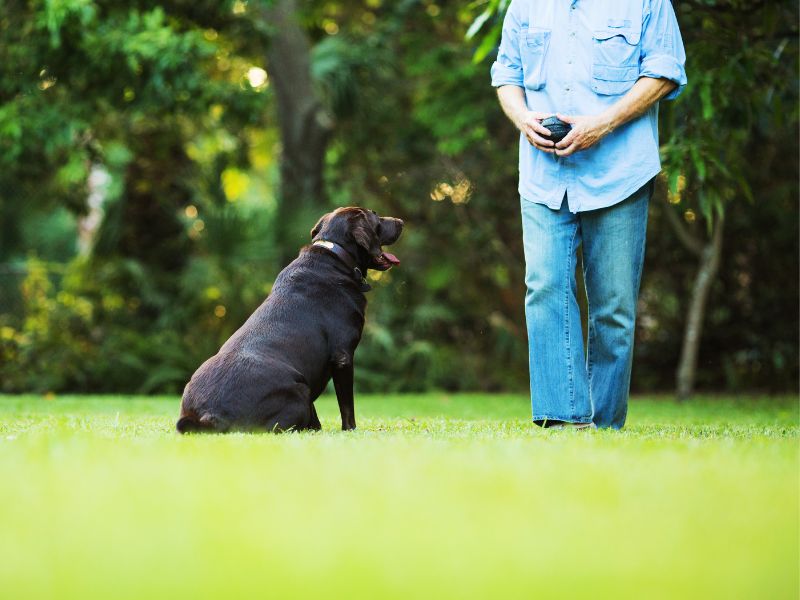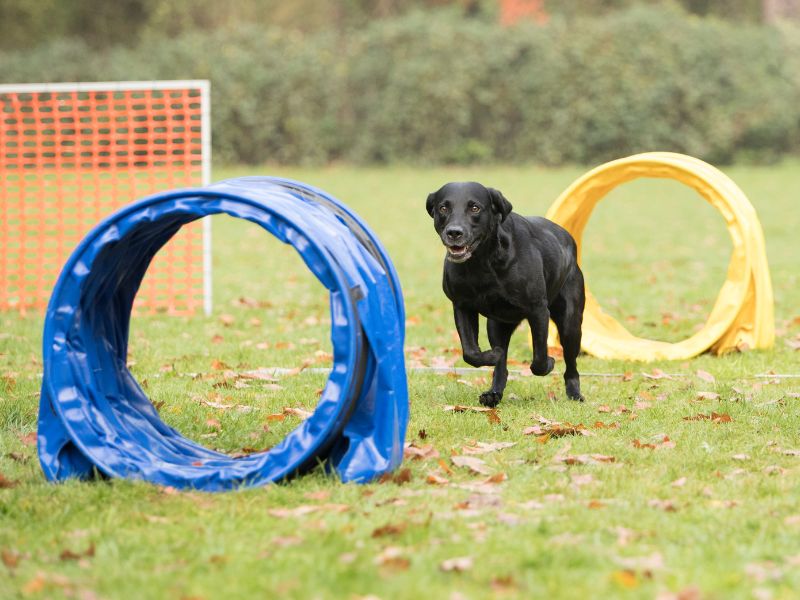Dog training methods have evolved over the years, forming diverse approaches to better suit individual dog personalities, capacities, and learning styles. The shared goal of these methods is to establish a strong bond between pet owners and their dogs, giving rise to well-behaved, obedient canine companions.
One popular approach to dog training is positive reinforcement, centered around rewarding desired behaviors to establish long-lasting associations. Clicker training, for example, utilizes a simple tool to signal to the dog that it has performed correctly and a reward is imminent. This type of training offers round the clock guidance and continuous communication.
Other dog training methods focus on technology, such as electronic collars that deliver mild stimulation to reinforce commands. Although controversial among some animal welfare advocates, the correct use of these tools may prove beneficial for distance training purposes. In any case, pet owners should carefully research and adopt the training method that works best for their unique relationship with their beloved canine companions.
Your Labrador Training Methods Should Be Fun
Training your Labrador should be a fun and enjoyable experience for both you and your dog. It’s essential to use positive reinforcement techniques, which focuses on rewarding your dog for desired behaviors. This approach encourages good behavior and helps to build a strong bond between you and your Labrador.
Utilizing reward-based training is beneficial for Labradors. Offering treats, praise, or playtime when your dog follows a command or behaves well can make the training experience exciting and pleasurable. Remember, consistency is key in helping your dog understand what is expected of them.
Ensure that the training sessions are kept brief and engaging. Long training sessions can become tedious, and your Labrador may lose interest. Aim for short, regular sessions that last around 10-15 minutes each, and try to maintain a positive and energetic atmosphere throughout the process.
Incorporate a variety of training exercises into your routine to keep your Labrador engaged and responding to new challenges. Focus on essential commands like “sit,” “stay,” “come,” and “drop it” as well as leash-walking skills and socialization with other dogs.
Remember that patience is vital, as every dog learns at a different pace. Don’t become frustrated if your Labrador doesn’t master commands right away. Instead, stay calm, and try to approach the situation with a fresh perspective, adjusting your methods as needed.
By keeping your Labrador training methods fun and enjoyable, you’re more likely to have success in molding well-behaved, confident dogs, and build a strong and lasting bond with your four-legged companion.
Four Approaches to Dog Training
When it comes to training dogs, there are various methods that trainers and dog owners can utilize to achieve the desired results. The best approach varies depending on factors such as the dog’s breed, temperament, and the specific behavior being trained. In this section, we will discuss four popular approaches to dog training.
1. Aversive-based training involves using positive punishment and negative reinforcement techniques. Trainers use aversive stimuli, like loud noises or uncomfortable leash corrections, to discourage undesirable behaviors. This method is aimed at teaching the dog to associate certain actions with unpleasant consequences, which may deter them from repeating those actions in the future. However, it’s essential to use this approach cautiously, as excessive or improper use can lead to fear, anxiety, and an impaired relationship between the dog and human.
2. Reward-based training focuses on using rewards to encourage positive behaviors. This approach, also known as positive reinforcement, involves providing treats, praise, or other forms of reinforcement when the dog performs a desired behavior. Over time, the dog learns to associate these behaviors with positive outcomes, and they are more likely to repeat them. Reward-based training is considered highly effective for most dogs, as it fosters a positive relationship and motivation to learn.
3. Alpha/dominance training is based on establishing the trainer or dog owner as the “alpha” or dominant figure in the relationship. This method often involves the use of assertive and, at times, physical techniques to achieve control over the dog’s behavior. While some trainers claim that this approach is necessary for certain breeds or aggressive dogs, it can also cause adverse side effects, such as fear and aggression. The consensus among many dog trainers and behaviorists is to focus on building a trusting and cooperative relationship instead of relying heavily on dominance.
4. Model-rival training is a unique method that involves allowing a dog to observe another dog performing desired behaviors and receiving rewards. This approach capitalizes on the dog’s natural tendency to learn through observation and social cues, and can be especially useful for teaching complex tasks or behaviors that are difficult to convey using traditional training methods. While not as commonly used as the other methods mentioned, model-rival training can be beneficial in specific contexts.
In conclusion, selecting the appropriate dog training method depends on various factors, such as the dog’s temperament and the desired outcome. By understanding the potential advantages and limitations of each approach, trainers and dog owners can create a tailored and effective training plan for their canine companions.
Traditional Trainers
Traditional Labrador Training Methods
Traditional Labrador training methods often involve the use of force or coercion. The key principles include asserting dominance over the dog and employing corrections for undesirable behaviors. Methods such as choke chains, prong collars, and physical punishments are commonly used in this approach.
Things Dogs Don’t Like
Dogs do not like being physically corrected or forced into specific positions. This can create fear and stress, diminishing the bond between the dog and its handler. Anxiety can also lead to increased undesired behaviors instead of reducing them.
Pros and Cons of Traditional Training
Pros:
- Can yield fast, short-term results in some dogs
- Is believed to be effective when dealing with severe behavioral issues
Cons:
- May lead to fear, stress, and anxiety in dogs
- Can weaken the bond between handler and dog
- May exacerbate behavioral problems rather than resolve them
One of the Family
It is essential to remember that dogs are family members and should be treated with love, respect, and kindness. Training methods must be tailored to foster a healthy relationship between the dog and its handler, encouraging obedience through trust and mutual understanding.
Dominance is Dead
Modern dog training has shifted away from dominance-based approaches. Studies have shown that dogs work better with their humans when trained using positive reinforcement and reward-based techniques.
Punishment Makes Dogs Grumpy
Punishment-based training can create grumpy and fearful dogs. This may lead to undesirable behaviors that could worsen over time, as the dog becomes more stressed and anxious.
Punishment Makes Dogs Slow
Dogs trained with punishment-based techniques may become slow to respond or hesitant to participate in training sessions. They may become uncertain and fearful of the consequences, which could hinder their learning process.
Choosing a Method
When choosing a dog training method, it is vital to consider your dog’s personality, your goals, and the potential long-term effects of the chosen approach. While traditional trainers may still have a place in some cases, modern reward-based training methods have been shown to be more effective, compassionate, and successful in creating well-adjusted, happy dogs.
Modern Labrador Training Methods
What Exactly is Modern Dog Training?
Modern dog training encompasses science-backed methods such as positive reinforcement and employing appropriate rewards to encourage desired behaviors in dogs. This approach moves away from traditional techniques involving aversives, punishment, and force.
But I’m not a Scientist!!
No worries! You don’t have to be a scientist to incorporate modern methods in training your Labrador. These techniques are accessible and easy to learn, promoting a more enjoyable and efficient training process for both you and your dog.
Using Rewards Effectively
When using modern dog training methods, it’s essential to:
- Identify rewards that motivate your Labrador (e.g., treats, toys, praise)
- Deliver rewards promptly after the desired behavior
- Gradually decrease the frequency of rewards as your dog masters the behavior
Practice Makes Perfect
Consistency and repetition are crucial in modern dog training. Set aside time each day for training sessions, and remember to be patient as your Labrador learns new commands and behaviors.
No-One to Learn from?
Seek out resources such as:
- Online articles and videos on modern training techniques
- Recommended books on positive reinforcement training
- Local dog training classes or workshops
The Success Story of the Decade
Many professional trainers and Labrador owners have seen remarkable results using modern training methods. Dogs trained with these techniques tend to be happier, more confident, and better behaved.
Everyone’s Doing It!
An increasing number of trainers and dog owners are adopting modern dog training methods due to their proven effectiveness and numerous benefits.
The Benefits of Modern Dog Training
Some advantages of using modern training methods include:
- Faster results
- Stronger bond between you and your Labrador
- Less stress for both owner and dog
- Effective for dogs of any breed or age
Balanced Trainers
Crossover Dog Training
Balanced trainers in dog training methods focus on a combination of positive reinforcement and corrective measures for behavior modification. This approach, also known as crossover dog training, aims to understand not only the dog’s needs but also the underlying causes of unwanted behaviors. By addressing these issues with appropriate techniques and tools, trainers can guide the learning process to develop well-mannered and obedient pets.
But What Happened to Balanced Training?
Despite the success of balanced training methods, it has been criticized by some who argue that using correction tools, such as prong collars or e-collars, is cruel and inhumane. It’s important to note that these tools are effective only when used correctly and ethically. Misuse of these tools may cause harm or fear in dogs. The key is to find the right balance between correction and reinforcement that works best for each individual dog, keeping their well-being as the top priority.
Getting Pippa’s Training Tips!
When approaching balanced training, consider the following tips from Pippa, a well-known dog trainer:
- Start with the basics: Whether you are training a new dog or working with an old friend, begin by reinforcing foundational skills such as sit, stay, and come.
- Positive reinforcement: Reward your dog with treats, praise, or play when they exhibit desired behaviors. This encourages your dog to repeat those behaviors.
- Be consistent: Set clear boundaries and expectations, and ensure that all family members follow the same rules and training methods.
- Patience is key: Dog training is a process that requires time, commitment, and patience. It’s crucial to remain persistent and patient, even when progress might seem slow.
- Ask for help: If you’re feeling overwhelmed, don’t hesitate to seek guidance from a professional dog trainer, a local dog training class, or online resources.
By following these tips and striking the right balance between reinforcement and correction, you can establish a healthy and lasting bond with your dog while creating a safe and enjoyable environment for both of you.
A Well Behaved Labrador
A Basic Set of Rules
A well-behaved Labrador can be a pleasure to have around. To achieve this, it’s important to establish a basic set of rules for your dog to follow. Key commands to teach your Lab include “sit,” “stay,” “come,” “drop it,” and “fetch.” Additionally, teaching your dog to walk on a loose leash is essential, as Labs are known for pulling on the leash. Remember, consistency is key when establishing these rules, so make sure to communicate clearly and practice regularly.
Training with Food and Toys
Positive reinforcement is one of the most effective training methods for Labrador Retrievers. This involves rewarding good behavior with food or toys to encourage it in the future. For example, when teaching your Lab to come when called, offer a treat when they successfully follow the command. Using your dog’s favorite toys can also be an effective way to reinforce good behaviors.
Keep in mind that using food and toys as rewards means ensuring your dog doesn’t become overly reliant on these incentives. Gradually reduce the frequency of treats and toys as your dog becomes more proficient with the desired behavior.
Getting Help
If you’re struggling to train your Labrador by yourself, consider enrolling in a dog training class or seeking the help of a professional trainer. Classes can provide structured training lessons and the opportunity for your Lab to socialize with other dogs. Look for trainers that use positive reinforcement techniques, as this will be most effective for your Labrador.
Need More Information?
If you’re looking to learn more about training your Labrador, there are numerous resources available:
- Books: Many books offer expert advice and tips on dog training.
- Online forums: Engage with fellow dog owners and share experiences, tips, and tricks.
- Websites and blogs: Reputable websites and blogs, such as The Labrador Site and The Spruce Pets, offer valuable training advice for Labrador Retrievers.
- Videos: Online video tutorials can provide visual demonstrations of training techniques for your Labrador.
Remember, patience and consistency are key when training your Labrador, and progress may vary from dog to dog. Keep a positive attitude, and with time, your Labrador will become a well-behaved companion.

